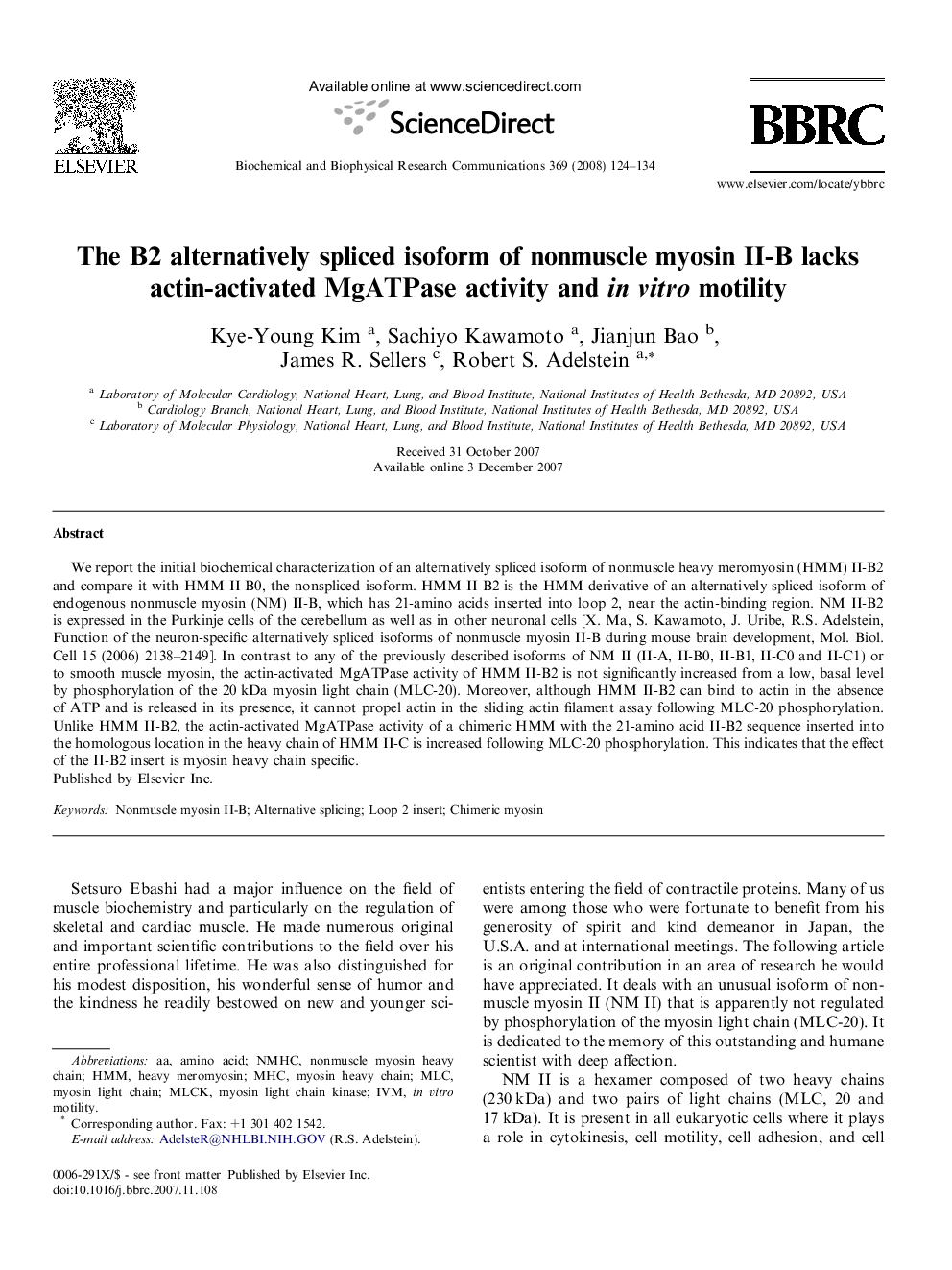| Article ID | Journal | Published Year | Pages | File Type |
|---|---|---|---|---|
| 10766822 | Biochemical and Biophysical Research Communications | 2008 | 11 Pages |
Abstract
We report the initial biochemical characterization of an alternatively spliced isoform of nonmuscle heavy meromyosin (HMM) II-B2 and compare it with HMM II-B0, the nonspliced isoform. HMM II-B2 is the HMM derivative of an alternatively spliced isoform of endogenous nonmuscle myosin (NM) II-B, which has 21-amino acids inserted into loop 2, near the actin-binding region. NM II-B2 is expressed in the Purkinje cells of the cerebellum as well as in other neuronal cells [X. Ma, S. Kawamoto, J. Uribe, R.S. Adelstein, Function of the neuron-specific alternatively spliced isoforms of nonmuscle myosin II-B during mouse brain development, Mol. Biol. Cell 15 (2006) 2138-2149]. In contrast to any of the previously described isoforms of NM II (II-A, II-B0, II-B1, II-C0 and II-C1) or to smooth muscle myosin, the actin-activated MgATPase activity of HMM II-B2 is not significantly increased from a low, basal level by phosphorylation of the 20Â kDa myosin light chain (MLC-20). Moreover, although HMM II-B2 can bind to actin in the absence of ATP and is released in its presence, it cannot propel actin in the sliding actin filament assay following MLC-20 phosphorylation. Unlike HMM II-B2, the actin-activated MgATPase activity of a chimeric HMM with the 21-amino acid II-B2 sequence inserted into the homologous location in the heavy chain of HMM II-C is increased following MLC-20 phosphorylation. This indicates that the effect of the II-B2 insert is myosin heavy chain specific.
Keywords
Related Topics
Life Sciences
Biochemistry, Genetics and Molecular Biology
Biochemistry
Authors
Kye-Young Kim, Sachiyo Kawamoto, Jianjun Bao, James R. Sellers, Robert S. Adelstein,
